If you have a smaller garden you can still snip away, but never denude your plants because garden flowers last much longer than cut flowers. A lot of plant breeding in the past was prompted by the cut flower trade because nurseries used to be the main suppliers. Geums, peonies, chrysanthemums, asters, dianthus, scabious, phlox and gypsophila were all bred for picking and then sent up by train to the city flower markets.
Tips for Cut Flowers
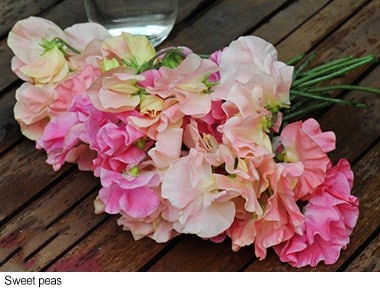
Cut in the morning if you can, as early as possible, and immediately immerse each stem in a bucket of cool water up to its neck and then stand them in a shady place and let them drink for a few hours. This will also allow any pollen beetles to escape, a necessity for sweet peas. Soft stems need a diagonal cut with sharp scissors to increase the surface area of stem and help the uptake of water. Woody stems need distressing, with a small hammer or similar. When arranging, don’t allow any foliage to linger below the waterline, it will green up the water as it decomposes killing the flowers. It will also smell. Change the water regularly, or top it up. Refresh the flowers by taking them out of the container and discard any spent flowers. Recut the stems of those that will do a little longer. Shake each flower so that it sheds any debris and then rearrange.
Good Perennials for the Cutting Garden
These can be bedded out in straight lines in a dedicated cutting garden, with wide paths between for access. Once planted they can be left to their own devices and generally won’t need division. They can be arranged by height, but certain perennials (such as pinks, agapanthus and alstroemerias) need to be at the front in full sun. Leave a space behind the sun lovers for annuals, bulbous plants and tenders such as dahlias.
Perennial Stalwarts for Good Soil
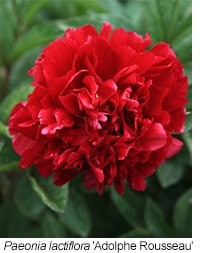 Paeonia lactiflora varieties were bred mainly in France for cut flowers in the mid-19th century. The blooms need to be picked at the marshmallow stage, just as the bud opens to the size of an average marshmallow. The bud should be opening slightly and feel spongy to the touch. Picked like this, the flowers will open in water and last for 14 days or more. ‘Sarah Bernhardt’ is the classic pink peony for cutting, although it will need staking - see last years June Musings for more info about peonies. Peonies are very hardy but they enjoy winter chill: this provokes the flower buds and that’s why they’re planted shallowly so that the tubers lie only two inches below the soil. That way they feel the cold. Paeonia lactiflora varieties were bred mainly in France for cut flowers in the mid-19th century. The blooms need to be picked at the marshmallow stage, just as the bud opens to the size of an average marshmallow. The bud should be opening slightly and feel spongy to the touch. Picked like this, the flowers will open in water and last for 14 days or more. ‘Sarah Bernhardt’ is the classic pink peony for cutting, although it will need staking - see last years June Musings for more info about peonies. Peonies are very hardy but they enjoy winter chill: this provokes the flower buds and that’s why they’re planted shallowly so that the tubers lie only two inches below the soil. That way they feel the cold.
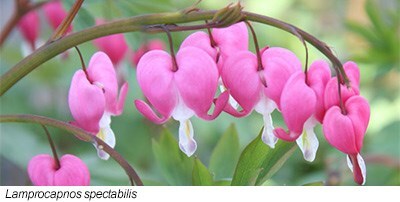
Roses could be placed close by, because rose foliage tones well with peony leaves. Add the pink and white bleeding heart (Lamprocapnos spectabilis) to this, and you have a toning trio that follow each other. Good pink roses for cutting include David Austin’s globular ‘Royal Jubilee’, the coral-pink pillar rose ‘Aloha’, ‘Felicia’, ‘You’re Beautiful’ and ‘Bonica’. ‘Wildeve’ is also excellent, but wide and low so not so good for a windy garden as the stems can shear off. Apricot roses also look good in a vase, with dark foliage or sultry flowers, and these include ‘Crocus’ and ‘Buff Beauty’. Clearer yellow are excellent too, especially with blues, and ‘Golden Celebration’ is acknowledged as one of David Austin’s finest English roses.
Frothy Flowers for Fillers
 It’s always a good thing to have frothy plants as fillers. The two most widely used perennials are Alchemilla mollis, the lime-green starry plant, and the white or pale-pink gypsophila. Alchemilla mollis is a floppy front of the border plant that needs to be deadheaded straight after flowering because it self seeds too efficiently. However in a vase with sweet peas, it cannot be beaten. It is also the perfect partner for the tall Cephalaria gigantea, a six-foot high scabious with black-patterned buds and primrose-yellow flowers in May. Some of the daintier umbellifers are also excellent fillers and Cenolophium denudatum, the Baltic parsley, can be accommodated in a dull corner. You can also raise the annual or biennial Ammi majus, from seeds sown in autumn. It’s always a good thing to have frothy plants as fillers. The two most widely used perennials are Alchemilla mollis, the lime-green starry plant, and the white or pale-pink gypsophila. Alchemilla mollis is a floppy front of the border plant that needs to be deadheaded straight after flowering because it self seeds too efficiently. However in a vase with sweet peas, it cannot be beaten. It is also the perfect partner for the tall Cephalaria gigantea, a six-foot high scabious with black-patterned buds and primrose-yellow flowers in May. Some of the daintier umbellifers are also excellent fillers and Cenolophium denudatum, the Baltic parsley, can be accommodated in a dull corner. You can also raise the annual or biennial Ammi majus, from seeds sown in autumn.
Summer Stalwarts
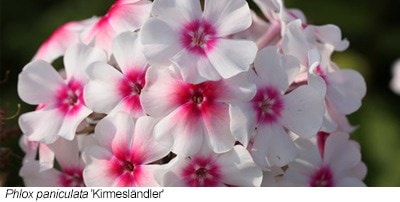
Border phloxes make great cutting plants and these fragrant Edwardian beauties flower in late-summer. They do need rich soil and they hate competition, so give them some space and feed them at least twice a year with Vitax Q4. ‘Bright Eyes’ is easy to grow, with highly scented, pale-pink flowers eyed in crimson. 'Kirmesländler' is similar with white flowers
centred in red. ‘Rembrandt’ is an excellent green-toned white. ‘Starfire’ is a strident pink-red and the black-toned young foliage is stunning long before the flowers. ‘Franz Schubert’ is also incredibly easy to grow, with lavender flowers that glow in evening light. The last to flower is usually the white, tight-headed ‘Mount Fuji’. Deadhead your phlox regularly to encourage flowering side shoots. Remove any shoots that wilt, often this is purely wind damage rather than disease. Shake the plants regularly too, so the old flowers fall off otherwise they mar the show.
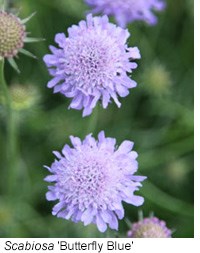 Scabious also make wonderful cut flowers and the blue-flowered forms tend to be perennial, unlike the darker flowered S. atropurpurea which can be seen off in cold winters. The domed, lavender-blue flowers of the new, fully hardy ‘Blueberry Muffin’ have a purple middle. The smaller-flowered ‘Butterfly Blue’ is a sterile hybrid that will flower all summer long. Or you might enjoy the green-tipped lavender-pink head of ‘Magic’, another new scabious. All cut well, with their long wiry stems, and all last well. Scabious also make wonderful cut flowers and the blue-flowered forms tend to be perennial, unlike the darker flowered S. atropurpurea which can be seen off in cold winters. The domed, lavender-blue flowers of the new, fully hardy ‘Blueberry Muffin’ have a purple middle. The smaller-flowered ‘Butterfly Blue’ is a sterile hybrid that will flower all summer long. Or you might enjoy the green-tipped lavender-pink head of ‘Magic’, another new scabious. All cut well, with their long wiry stems, and all last well.
Add dianthus on the sunny edges, at the front so that they are not overshadowed. Good cutting varieties include the scented ‘Raspberry Sundae’ and the mid-pink ‘Candy Floss’ both members of the Scent First Series. To keep your pinks in flower cut away the whole stem when you deadhead, as this will promote more flower stems. Don’t simply nip off the spent flower. Cut all your plants back in September, to promote fresh growth and then the tight mounds will overwinter well and your plant will avoid becoming leggy.
Alstroemerias are possibly the longest-lasting flower of all, but they need a warm situation to flower well. The Planet Series reaches almost three feet high and ‘Cahors’ is almost rose-madder, but with custard-yellow petals feathered in brown. ‘Sirius’ is a much brighter pink, with less yellow, and ‘Rivale’ is an understated blush-white with purple-brown markings to alternate petals. When planting alstroemerias try to get them in the ground in summer, because they need to establish roots before winter arrives. As the plants mature they plunge deeper into the ground, rather like species tulips. Once the roots have gone deep alstroemerias survive well, but the hard thing is nurturing them for their first couple of years. A thick layer of mulch during winter helps, but do clear it away in early spring because the great enemy of the alstroemeria is the slug. When picking, or deadheading, pluck the alstroemeria stems from the base to promote new growth from the meristem. Never cut them.
Bulbous and Tuberous Additions

Agapanthus are also slightly tender, but the ones that die away and show a deciduous tendency mainly overwinter. Start with the Headbourne hybrids, because these have been grown outside for decades. Purple alliums (which need planting in September) are also a good addition and ‘Purple Sensation’ cannot be beaten for vigour and colour. Pick as the buds open, or leave the flowerhead to turn green and then dry it. Never allow alliums to self-seed, because this diminishes the mother bulb.
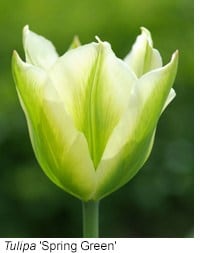 ‘Purple Sensation’ is a perfect follow up act for tulips and the following can be left in to become perennial. ‘Spring Green’ is a cool green and white, ‘Ballerina’ is a scented terracotta and ‘Negrita’ is a deep-purple. ‘Shirley’ is a purple-mottled white. However it opens pale yellow, before dappling occurs. Cut tulips will grow in the vase, so be prepared to recut the stems every two days. Also tulips need to be arranged on their own: they add a toxin to the water that diminishes other flowers. However they are worth growing and cutting as they swoon very elegantly. Tulip bulbs need to be planted in cool conditions, so wait until late October or November because this will avoid the common fungal disease Tulip fire (Botrytis tulipae). All other bulbs go in during September. ‘Purple Sensation’ is a perfect follow up act for tulips and the following can be left in to become perennial. ‘Spring Green’ is a cool green and white, ‘Ballerina’ is a scented terracotta and ‘Negrita’ is a deep-purple. ‘Shirley’ is a purple-mottled white. However it opens pale yellow, before dappling occurs. Cut tulips will grow in the vase, so be prepared to recut the stems every two days. Also tulips need to be arranged on their own: they add a toxin to the water that diminishes other flowers. However they are worth growing and cutting as they swoon very elegantly. Tulip bulbs need to be planted in cool conditions, so wait until late October or November because this will avoid the common fungal disease Tulip fire (Botrytis tulipae). All other bulbs go in during September.
Summer-flowering Bulbs 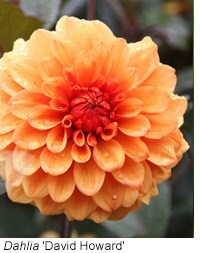 Two summer flowering bulbs can also play their part. Dahlias are a superb cut flower, but do opt for the fuller-flowered doubles such as ‘David Howard’, which last longer. Grow some dark forms too because they look very ornate in border or vase. The Karma series, deliberately bred in Holland for the cut flower market, are all excellent and the dark-red ‘Karma Choc’ has bronzed foliage as well as lovely flowers. Two summer flowering bulbs can also play their part. Dahlias are a superb cut flower, but do opt for the fuller-flowered doubles such as ‘David Howard’, which last longer. Grow some dark forms too because they look very ornate in border or vase. The Karma series, deliberately bred in Holland for the cut flower market, are all excellent and the dark-red ‘Karma Choc’ has bronzed foliage as well as lovely flowers.
Lilies are so abundant and cheap to buy they are not worth a place in most cutting gardens. Instead enjoy a potful of scented lilies by a seat. The pink-spotted ‘Tiger Edition’ is a lovely thing to grow.
Annuals and Biennials. Sprinkle and sow annuals can still be sown now, although they must be kept watered. Nigella, calendula, bells of Ireland, zinnias and cosmos all make colourful cut flowers. Antirrhinums are also superb, and ‘Admiral White’ could be used to calm a colourful medley in any vase. It’s also worth sowing biennials in the next week or two and these include seeds of the deep-red wallflower ‘Blood Red’, or the russet-red ‘Fire King’.
Later Additions 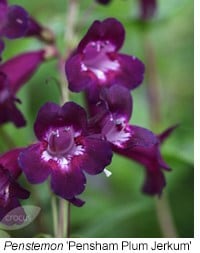 Penstemons and asters are both good in a vase. ‘Sour Grapes’ a smoky mixture that hovers between blue and pink and ‘Alice Hindley’ is a smaller-flowered penstemon in the same hue. ‘Raven’ is a dramatic near-black as it name suggests. ‘Pensham Plum Jerkum’ is later to flower than many, but the open-mouthed, dark-plum flowers have great presence. Follow on with asters and ‘Little Carlow’ has clouds of lavender-blue flowers held in small red-tinted buds. ‘Harrington’s Pink’ is a September bee and butterfly pleaser, or opt for the black stems and diamond-shaped foliage of Aster divaricatus - a florist’s favourite. Penstemons and asters are both good in a vase. ‘Sour Grapes’ a smoky mixture that hovers between blue and pink and ‘Alice Hindley’ is a smaller-flowered penstemon in the same hue. ‘Raven’ is a dramatic near-black as it name suggests. ‘Pensham Plum Jerkum’ is later to flower than many, but the open-mouthed, dark-plum flowers have great presence. Follow on with asters and ‘Little Carlow’ has clouds of lavender-blue flowers held in small red-tinted buds. ‘Harrington’s Pink’ is a September bee and butterfly pleaser, or opt for the black stems and diamond-shaped foliage of Aster divaricatus - a florist’s favourite.
|
Things to do
 |
Slug and snail alert
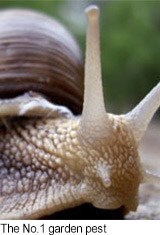
Slugs and snails are on the go. Frisk all kniphofias, evergreen eryngiums, iris and hemerocallis and destroy any you find. Keep the hoe going, to disrupt the soil and bring any eggs to the surface.
|
 |
Sow fast-growing veg
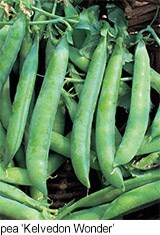 There’s still time to sow some vegetables, including peas and carrots. Go for an early season carrot now, such as ‘Amsterdam Forcing’ because they mature fast. Also sow pea ‘Hurst Greenshaft’ because it crops heavily whenever its sown.
|
 |
Plant perennial sweet peas
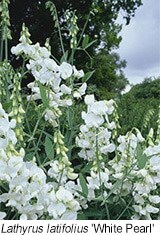
It’s too late to sow annual sweet peas, but perennial sweet peas also make very good plants for the vase although they lack scent. Lathyrus latifolius ‘White Pearl’, grown in a little shade so that the white glows, is a very good climber. It will self-seed and not necessarily come true, so deadhead any pods.
|
 |
Revamp bearded irises
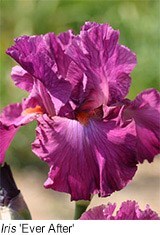
Tall bearded irises need to have their stems removed after flowering, from the base. This will concentrate the plant's energy into producing new rhizomes. They need their toes in sun, so it's worth clearing a space round the base now.
|
 |
To deadhead or not?

Don't waste time deadheading once and only flowering roses. They will not bloom again and many have interesting small hips. Despite only flowering once, these roses are still worth planting because they drip with masses of flower - making June truly glorious. Only deadhead your repeat-flowering roses. Also feed these after their first flush using Vitax Q4.
|
|
|
Essential Kit for June

Felco cut and hold secateur
£73.99

Compact snips
£11.99
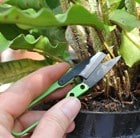
The flower dead header
was £4.49 now £3.49

Basket trug
£29.99
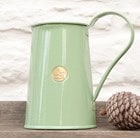
Haws jug
£16.99

Metal jug vase
£18.99
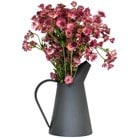
Oil pot jug
£18.99
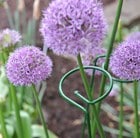
Single stem support
from £5.99
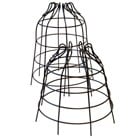
Plant support cage
from £34.99
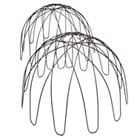
Dome plant support
from £19.99
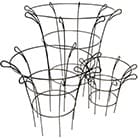
Fluted plant support
from £29.99
|
|






























